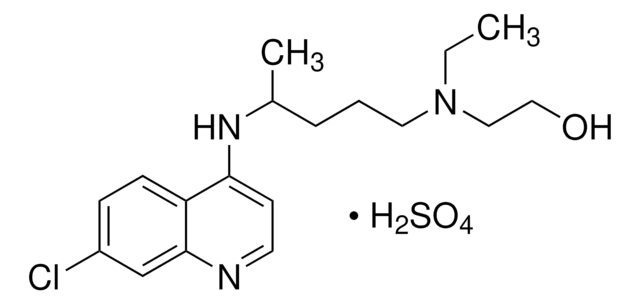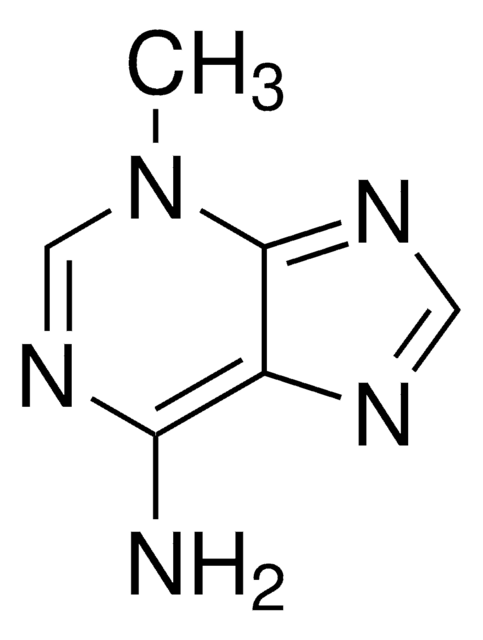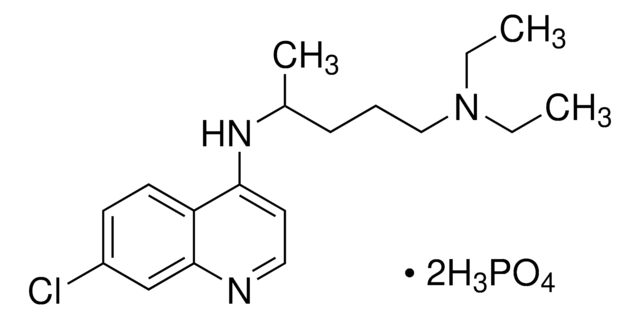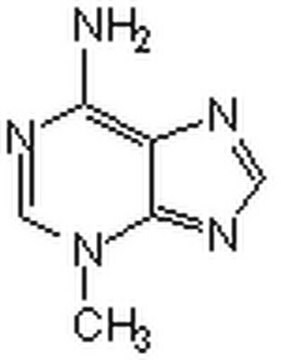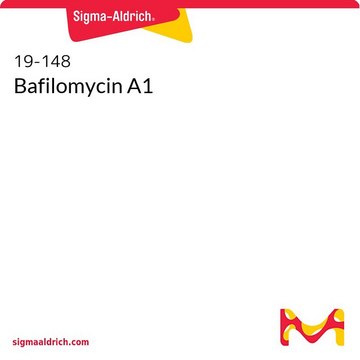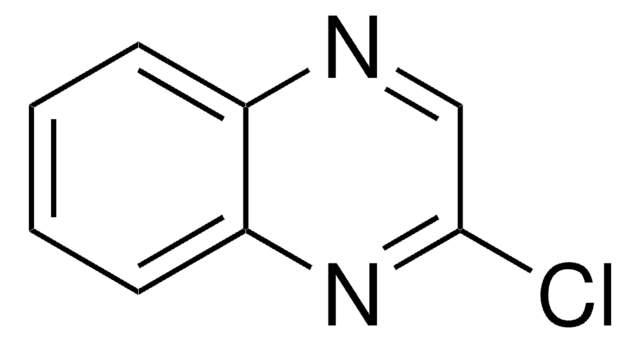C6628
Chloroquine diphosphate salt
98.5-101.0% (EP), powder or crystals, autophagy inhibitor
Synonym(s):
N4-(7-chloroquinolin-4-yl)-N1,N1-diethylpentane-1,4-diamine diphosphate, N4-(7-Chloro-4-quinolinyl)-N1,N1-dimethyl-1,4-pentanediamine diphosphate salt
About This Item
Recommended Products
Product Name
Chloroquine diphosphate salt, powder or crystals, 98.5-101.0% (EP)
Quality Level
Assay
98.5-101.0% (EP)
form
powder or crystals
mp
192-198 °C
antibiotic activity spectrum
parasites
Mode of action
enzyme | inhibits
SMILES string
OP(O)(O)=O.OP(O)(O)=O.CCN(CC)CCCC(C)Nc1ccnc2cc(Cl)ccc12
InChI
1S/C18H26ClN3.2H3O4P/c1-4-22(5-2)12-6-7-14(3)21-17-10-11-20-18-13-15(19)8-9-16(17)18;2*1-5(2,3)4/h8-11,13-14H,4-7,12H2,1-3H3,(H,20,21);2*(H3,1,2,3,4)
InChI key
QKICWELGRMTQCR-UHFFFAOYSA-N
Gene Information
human ... ABCC1(4363)
Looking for similar products? Visit Product Comparison Guide
Related Categories
General description
Application
Chloroquine diphosphate salt has been used :
- in in vitro antiplasmodial assays
- in transfection and infection assays
- in autophagy inhibition
- in differentiation of induced pluripotent stem (iPS) cells into cardiomyocytes
- in flow treatment of infected blood
Biochem/physiol Actions
Features and Benefits
Signal Word
Warning
Hazard Statements
Precautionary Statements
Hazard Classifications
Acute Tox. 4 Oral
Storage Class Code
11 - Combustible Solids
WGK
WGK 3
Flash Point(F)
Not applicable
Flash Point(C)
Not applicable
Personal Protective Equipment
Choose from one of the most recent versions:
Already Own This Product?
Find documentation for the products that you have recently purchased in the Document Library.
Customers Also Viewed
Articles
We presents an article on Autophagy in Cancer Promotes Therapeutic Resistance
Drug Transport
Chromatograms
application for HPLCOur team of scientists has experience in all areas of research including Life Science, Material Science, Chemical Synthesis, Chromatography, Analytical and many others.
Contact Technical Service
